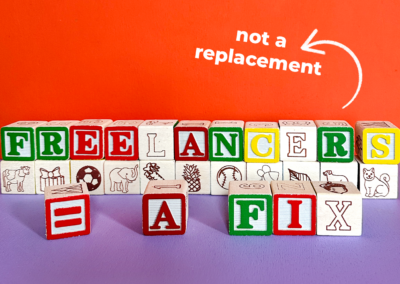In a Post-Pandemic world, time mastery requires paying even more attention to our inner rumblings.
Leave it to a creative leader to say we’re doing productivity all wrong. As if we’re not already pegged as head-in-the-clouds misfits who are allergic to timesheets, I’m going to argue that we should become even more list-resistant? Kind of.
Don’t get me wrong: you absolutely should have a to-do list. I’ve got one right here that I carry everywhere I go. I just think we’re doing lists all wrong.
Instead of thinking of a list like a recipe, I think of it like a menu.
A recipe is linear. A menu is filled with options you choose based on what appeals to you in the moment. You don’t even choose dessert until your stomach is full of something else. And matching what appeals to you in the moment should not only occur at a dinner table but at your desk, too.
Here’s what I mean. Below are three random items from my current to-do list:
“Complete new patient paperwork for doctor”
“Book ticket to Cape Cod”
“Write outline for video project”
My brain has a unique emotional response to each item. Items one and two require interacting with forms or customer service agents, which I detest.
Item three – write outline for video project – is open-ended and creative. This is the crème brulee on the menu. I will always be excited about item three. Yet I know that it requires the most of me: the most time, focus and clarity of thought. So I’m not going to attempt that past 8 pm or in a loud airport lounge. This kind of time/productivity calculation isn’t anything new.
But here’s the very new part. Now that many of us will be working from home at least part-time — and given more latitude for setting our own hours — the options for how we get our work done have exploded.
Hooray!
Also, oh, shit.
A menu that used to be one page long is now like the Cheesecake Factory menu with page upon page of options. How exactly are we supposed to figure out what to do when?
Rather than looking for an external system to guide us, I suggest we be guided, moment by moment, by our internal systems.
I’ve coined this Mood Matching and here’s how it looks in practice. I scan my list and settle upon my next task after asking:
How awake and alert am I?
How comfortable am I right now (including hungry, cold, in good seating, do I have to pee)?
How quiet is it where I’m working?
Are others likely to enter my space and kill the zen anytime soon?
What’s next on my schedule and what kind of headspace do I need to be in for it?
If you’re a manager, you can help your team ask questions like these and create others of their own invention. You can model how you are tackling things and sometimes deviating from the plan because of shifting micro-climates in mood. Neurodiversity and mental health fluctuations should factor into these equations. In the new world of work, flexibility is the ultimate superpower, letting people do their best work whenever, however they wish.
Creative workplaces, this is your moment.
I always advise creatives to guard their time like it’s the border to a very rich country. Which it is.
Creativity is a renewable resource but it doesn’t replenish on demand. When inspiration strikes, you’ve got to drop everything and surrender to the stardust. Completing expense reports when a big idea is tugging at your imagination is a form of creative malpractice.
Equally foolish is to apply linear thinking to your creativity-stoking endeavors. You know that list you keep on the Notes section of your phone, with books, shows, movies and podcasts friends have recommended? Applying a chronic finisher mentality to the media you ingest is just as misguided as numbering your work to-do list. “I can’t watch/read/listen to that until I finish such and such” is robbing you of mood matching your media. I promise there’s no Netflix Police that arrives at your door if you abandon a series, even mid-episode, to snack on something more suited to your craving.
There’s a quote I like: “I hate when I turn my car on in the morning and the music is blaring. Like woah – I’m not the same person I was last night.”
Pairing your media choice to a moment is a form of dialing up or down different moods and is a creative art in and of itself.
Poetry = micro-doses of provocative thought
Podcasts = good for contemplative soaks in the tub
Audiobooks = literary lullabies for when you’re tired
Playlists = soundtracks of the everyday
This same art can be applied to your work.
One final word about procrastination
There will always be items that keep getting transferred from one list to the next because we just never seem to get to them. Or the book that’s been sitting on our nightstand unopened since pre-Covid. Before you beat yourself up about this, consider something for a moment. Just as we match the mood for stuff that gets done, our resistance to certain items might not be laziness but a deeper kind of knowing. Danielle LaPorte says “procrastination can be a form of intuition.”
Pay attention to this phenomenon: sometimes the final piece of knowledge or readiness to tackle something happens out of the blue, making the moment seem pre-ordained.
Trust the timing of your life.



